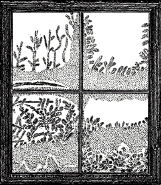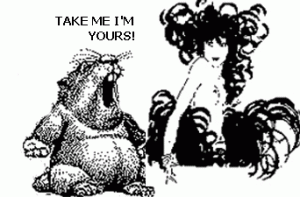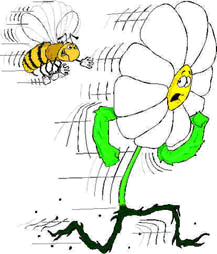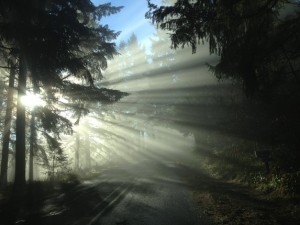So your garden and you have found each other? Discovery, that’s easy! Keeping your maturing garden growing and evolving, that’s harder. The plants we grow and the relationships we enter are tied to the eternal cycles of sowing, tending, and harvest – with the wellspring of passion gluing it all together
“First Enchantments
For most gardeners, the sap begins to flow – this means plants, plants and more plants, and one runs to the Nursery with great frequency and urgency. Expectations of horticultural highs and romance are found between the centerfolds of mail order magazines. The suggestions quicken, become selected, and the planted is viewed with satisfaction. Your garden is one that invites attention!
New introductions are tried, sometimes very carefully, attempting to match like to like. Garden beds are selected to please the eye — colors, forms, and textures chosen to harmonize. Like a good Monet, they are pleasing to the soul and these are the placements that fit most comfortably.
The connections made in gardens such as these are unexplainable. New friendships are found, kindled and nurtured in honeymoon beds. Spring gardens court, flirt, and flourish. New patterns take form. Native woodland plants find their roots intermingle with the alpines of the Himalayas, or the bulbs that remain beating to the biorhythms of South Africa. Great distances can be traveled when we take wonder in the rich diversity of relationships.
Spring brings illuminations aplenty. “But beware of unexpected commitment shocks.” Vows are exchanged — I promise to have manners. The garden that once courted, that once ‘invited attention” all too quickly becomes “pay attention to me!” Some plants demand more sunlight or warmer placements. Others prefer intimate, shadier plantings. Proper cultivation –better drainage.
The preconceived design and the realities of the garden bed no longer mesh. Slugs make their unwelcome presence known. So do other unplanned varmints, perhaps to remind us that wild things have their place too. The spring garden grumbles.
What to do? What to do.
We turn to experts. We buy books that tell us – “just listen to ME.” We learn latineze so we may more effectively communicate with plants ready to throw in the trowel. We worry about them withering away from over-or-under exposure. We understand that communication and proper staking are crucial; but once planted, we begin, just begin to resent those tie-downs, the commitment. We forget that these green-blooded friends are even more irritated and envious that we two footed creatures can at least, walk away.
SUMMER: “The Familiar Years”
We’ve grown through spring. Now it is early summer. All the bad habits are known. Maybe you are a late riser, or worse yet, an infrequent fertilizer. Mildews and root fungi previously overlooked are now critically commented upon. Controls and unnatural pruning’s are suggested. It’s push and shove and symptoms are searched for before they even appear. ‘Temper’s flash and pedigrees are exchanged. Sometimes too much is revealed. “WHAT! You had a relationship with a variegated Scrophulacea? I don’t know if I can ever forgive such uncouthness. It reveals such vulgar breeding.” Some things should never be brought into the sunlight.
The heat of summer is relentless. We rethink our original passions, our investments. The realization comes – that like the insect, we are caught in a more complex interplay, a web tighter than originally envisioned. What was I thinking of when I planted thirty different Rhododendrons? The ‘boarishness’ of their spring profusion has disappeared. Now they all begin to look like fat pustulant green lumps lurking in their summer clothes. You ask yourself, do I have time to keep deadheading all these flowers. You begin to use gloves when handling them. You fantasize … what might it have been like, with, say a perennial?
Questions keep multiplying as the demands of summer rise. We mutter about all the time it takes to keep the critters alive.
We find short cuts. Osmocote or other time-release fertilizers eliminate the need for that homemade compost or keeping the worm drippings going.. Irrigation systems replace those intimate early morning watering s and the late evening wine, once sipped while watching the evening sun linger over this garden is now drunk in solitude, or in refuge from the work of this garden.
“Two pathways diverge at this point. Either resentment takes stubborn root, or important new communication skills emerge.” The initial fascination with form and tactile fireworks may need the introduction of more subtle explorations. Investments and plantings that involve more than the horizontal are suggested.
By immersing oneself in sharing, we learn more and new directions lead to higher plateaus and a wakening garden of emotions.
In the changing we surprise ourselves, finding a new tang in the air. New directions. We may attempt spiritual gardens and with this more vertical interchange, both parties find themselves enriched. The blending is Hegelian — not always easy, for sometimes it involves retreat to the center – always a need for further advancement.
Some friends suggest a change of life style. Shall I keep the perennial seeds and send you only annuals? Implying one might benefit by flightier life-energies, some measured only in months. Then again, one never knows about annuals. Some re-seed and naturalize quite readily and commingle well in the perennial garden.
These are the mid-life incitements that engender nostalgic re-visits to the scene of the crime. The Nursery is rediscovered, with demands for something new, more exotic … wilder! New themes are explored. We try to recapture the passion of the original landscape and visit the juicy dreamworld of the fantasy garden.
Others visit the garden already built, to develop more fully what has been neglected. We talk about late summer fragrances; friendly, caring, and flirtatious communications directed to rich well-developed summer personalities.
AUTUMN: The Maturing Garden.
Autumn reds precede winter’s stealthy approach. Choleric extravagances forewarn the dropping of greener clothes. We worry about limbs revealing attainments not yet reached. Can we cope with winter’s dormancy? Much work remains; the deadheading of the superfluous, and the careful mulching of all that is precious. There remain cleanup chores and the often neglected fall fertilizing, which provides for continuing and healthy winter root activity. The days shorten ever more quickly, and some stray from the garden. Frequent flyer plans to Mexico are suddenly appealing, as are the more lingering visits to the garden next door.
All are Miracle-Gro medications for “Fall Fatigue.”
For those better rooted, autumn’s arrival is a blessing. The chores are done, bringing the time for serious inner explorations and the appreciation of the many intimate perspectives that this garden has hidden.
Trees grow in their slower cycles, ever quickened by the under story of flowery perennials and hyperactive annuals now busily setting seed. Autumn is a harvest season, a time of honest reflections and quiet contemplation of directions we may yet need to travel. A season that whispers of leaves falling; a time to measure the full growth of summer limbs not seen for all the confusion
Autumn rain brings new moisture to soil, floppy liquid notes to new dreams wakening. Suddenly, you know you can change at any age, at any time. The directions you tasted in summer lead to a new fall and better coordination of self and purpose.
You and your garden have found yourselves in each other. The fruit is harvested, as is the honey extracted from the hives. The bounty of earlier quickening’s now lies sweetly in your hand, and in the harvesting of earlier seasons; the garden is more intimate than ever.
The garden is white with the touch of frost and snow. The best of flavors and fragrances are remembered in this winter garden. Memories have time to thaw over the wood-fed stove, releasing memories that are curled up in long woolly socks. A winter garden brings more sharing, more laughter. Perhaps they are remembrances of earlier delights, mistakes and extravagances, a winter plateau of rich emotional poignancy.
Some is painful. The partner, who left you behind, yet lives deeply rooted in these echoing messages. We are best buddies now. Even the rocks that once proved so tiring are now part of that story. For someday both of you will be gone, but the rocks will remain.
and the snow will come
and filter over the footsteps left behind
Illustration by Jean Withrow ©
(C) Herbert Senft 2009, redone in 2014






